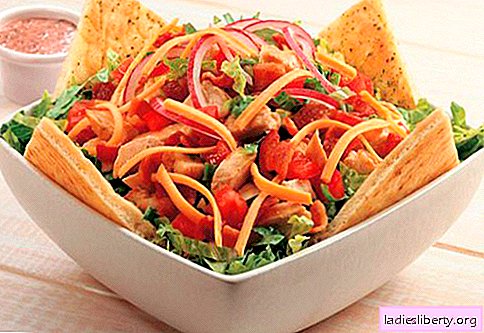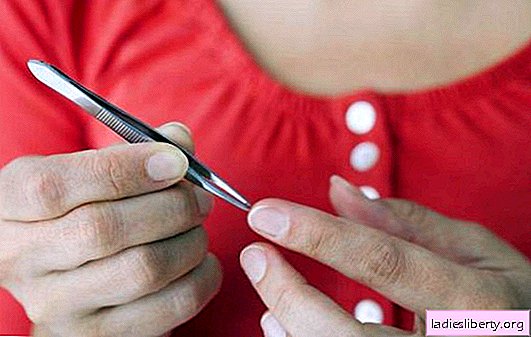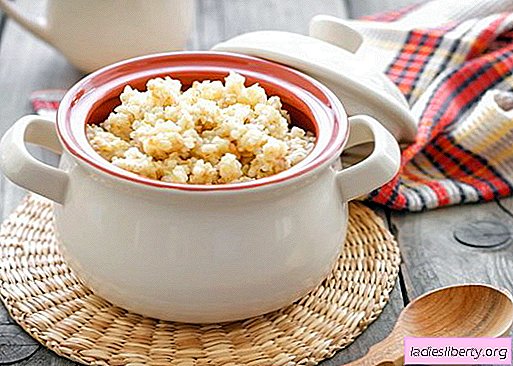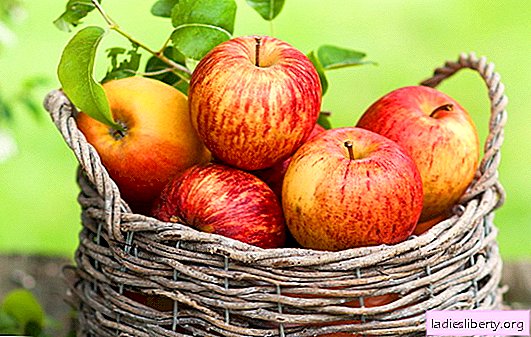
One of the hallmarks of Japanese cuisine is rolls, amazingly varied according to the recipe, so there is plenty to choose from to taste and even with a strict diet.
Rolls are unfairly classified as fast food - this is a natural, satisfying, highly nutritious and extremely healthy food.
How sushi differs from rolls and what are the benefits of the latter
To talk about what rolls are, you need to pay attention to sushi.
Seafood and rice are the millennial basis of Japanese cuisine. Once the fish was mixed with salt and sprinkled with rice groats, it was left to be stored in reserve. Further prepared according to the abundance and traditions of local life. Often consumed with rice, already boiled.
But only at the end of the XIX century, the now unknown creator came up with the idea that rice can be cooked, mixed with a special dressing (sugar, salt and rice vinegar), molded into a lump, put a piece on top of the fish and serve so many, many servings of a new dish .
Sometimes sushi is intercepted with a ribbon of seaweed so as not to fall apart.
Surprisingly quickly hundreds of new sushi recipes, traditions of their serving and consumption took shape, and barely more than half a century passed before this food began to symbolize and popularize Japanese cuisine around the world.
Some sushi remained unchanged, others changed and generally new items appeared under the influence of world culinary traditions.
Rolls are a variety of sushi and are rolls, cut into portions. They are usually formed using a bamboo mat.
Traditionally, the outer layer is a sheet of algae - nori, spread on it rice and filling - often fish, seafood, in raw, salted or smoked form.
Additives in the form of cucumber, avocado, cream cheese are popular.
There are rolls with chicken and vegetarian, fruit and dessert, with a shell not of nori, but of wheat tortillas. Most rolls are served chilled, but there are also warm ones - fried in batter or baked.
Rolls with a "wrapper" outward are called sushi maki, rice outward - uramaki.
The latter often roll in sesame or caviar of flying fish - tobiko.
Rolls served with pink pickled ginger, wasabi horseradish, soy and other sauces. Of the drinks, green tea is recommended, if alcohol is sake or plum wine. They eat rolls like most sushi - with chopsticks.
The energy value of rolls in terms of 1 unit fluctuates around 20-80 kcal.
Options for nutritional value - the content of calories, carbohydrates, proteins and other things, allow you to combine rolls with most diets to create the desired body.
Due to the basic set of frequently used ingredients, as well as the variety of additional ingredients, rolls are a valuable source of substances needed throughout the human body. They are able to prophylactically support the body healthy and accelerate its putting in order with many disorders and diseases.
What is the use of rolls if you analyze in detail their composition
Full disclosure of the benefits of rolls is possible only when considering any specific varieties of them. But you can, however, highlight common features if you take classic recipes as a sample, rather than innovations like grilled chicken in a tortilla.
A roll treat will usually include the following ingredients.
Rice is not just the basis for filling the rolls, but, above all, the source of complex carbohydrates that nourish the body with vital energy without the accumulation of fatty deposits For those involved in sports and fitness, the importance of the fact that during physical exertion and depletion of glucose reserves, complex carbohydrates prevent the breakdown of the proteins necessary for building muscles into energy;
· Rice vinegar is necessary to give rice a special aftertaste and stickiness. Even in folk medicine, ancient China was used to neutralize harmful substances that entered the body, and today it is known that it lowers cholesterol, speeds up metabolism and promotes tissue regeneration;
· Nori has been known for centuries as an anti-aging agent that is now actively used in the field of beauty for skin and hair. Ingesting algae inward likewise improves their condition. Nori also contains fiber, which prolongs the feeling of satiety and gently cleanses the intestines. A complex of trace elements, including iodine and iron, has a positive effect on the functioning of the nervous system, the production of enzymes, hematopoiesis, and vision;
· Tobiko caviar can be multi-colored, but with good quality dispense with dyes - green gives wasabi, orange gives ginger, black gives cuttlefish ink. Less valuable than red caviar, it is all the same - it contains proteins, vitamins A and B, it is indicated for exhaustion, vitamin deficiency, brittle bones, meteosensitivity;
· Seafood - from tuna and salmon to octopus, mussels and shrimp, are a valuable source of easily digestible protein, polyunsaturated fatty acids, vitamins and minerals. Iodine and selenium - one of the most important "marine" trace elements necessary for the thyroid gland and the immune system. Seafood is also rich in phosphorus and potassium, which means benefits for bone tissue and heart. There are very few diseases in which seafood would not be recommended in the diet.
How rolls are affected by the way they are served
Wasabi is a light green paste with a sharp-sweet specific taste. Get it from the crushed rhizome of the Japanese eutrem.
The powerful antibacterial properties make wasabi a means of reducing the risk of catching any parasites from raw seafood rolls. But this is not all of its qualities, pasta is also useful for:
· Removal of free radicals from the body;
Liver cleansing;
· Prevention of caries;
· Prevent blood clots;
· Relieve symptoms of respiratory diseases.
The pickled ginger served to the rolls and sushi is called gari, it is the exact opposite of the pickled ginger beni-shega, which garnish the main dishes spicy and hot. Gary is necessary for “erasing” the aftertaste of previous rolls, it refreshes, prepares for the perception of a new variety of them.
The beneficial properties of pickled ginger are comparable to those of ginseng.
It is useful for the prevention of colds and in the cold helps the human body keep warm. Being an analgesic relieves headaches.
In the early stages of pregnancy, they can block nausea from toxicosis.
With regular use, ginger eliminates bad breath.
Soy sauce is obtained as a result of fermentation (fermentation) of soybeans, sometimes with the addition of cereals (wheat), when exposed, in particular, to a special fungal culture.
This sauce, one of the main products of all Asian cuisines in principle, serves them not only as a seasoning but also replaces the need to salt food.
Saturated with valuable amino acids and superior to citrus in terms of vitamin C content, it is involved in the synthesis of hemoglobin and adrenaline, normalizes the acid-base balance in the body and has a slight sedative effect, helping with insomnia and overwork.
What harm can be from rolls?
Provided that the rolls are made from impeccably fresh and high-quality ingredients and there are no strict contraindications to their ingredients, the use of this dish, even frequent, can not cause harm. But there are still some limitations.
For example, even the best seafood in raw, slightly salted or smoked form can infect with parasites, causing a variety of harm to the human body.
To risk or not to get such harm from the rolls is a personal choice, but you can recommend ordering rolls in establishments with a good reputation or with great attention to quality to buy seafood for home cooking.
In addition, many seafood tend to accumulate mercury and other harmful substances.
And when using completely new types of them, in order to avoid allergies, you should always start with the smallest portion and there will be no harm from rolls in this regard.
The lack of soy sauce is a high sodium content, which can be fraught with the development of complications in diseases of the cardiovascular system and kidneys, and special care with this seasoning is needed for gout and hypertension.
Pickled ginger and wasabi are quite sharp, so more than a little bit for problems with the digestive tract, it is undesirable to eat them, but usually they don’t eat them much from the land, so rolls are unlikely to be harmed specifically because of them.
Rice vinegar, fortunately, in the composition of rice for rolls, an element is important, but not necessary, so it is advisable and very easy to refuse it with hypertension, acute liver diseases, and especially with diabetes mellitus.











